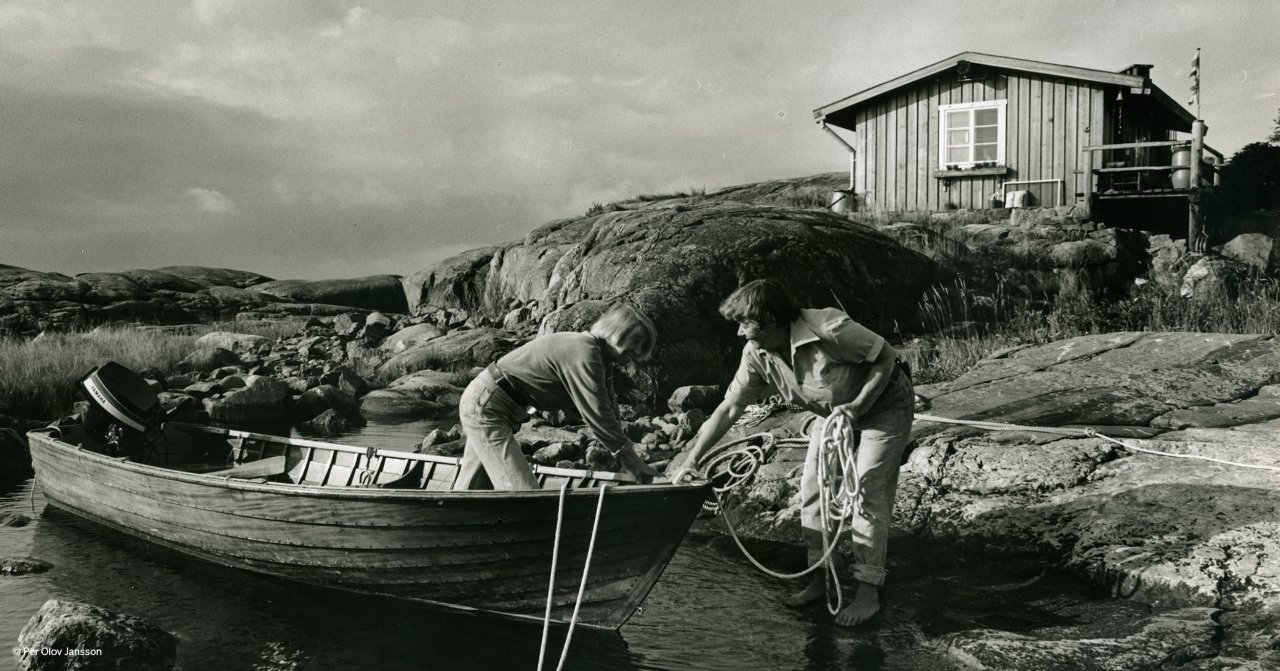Tove Jansson and her life partner Tuulikki Pietilä spent the entire summer season on the remote island of Klovharun during almost three decades beginning in the 1960s. Living on the island without electricity and running water demanded a lot of planning. What did they pack, how did they get themselves and all their belongings to the island and what did they need to think about at the end of the season? Find out in this article!
The summer season on Klovharun island started at the end of spring and went on until well into the fall, so Tove Jansson and Tuulikki Pietilä spent a total of up to four months yearly on the little skerry in the Pellinge archipelago. During these long summers, Tove and Tuulikki, who was a graphic artist, continued working on different projects, which included writing, illustrating and taking care of correspondence.
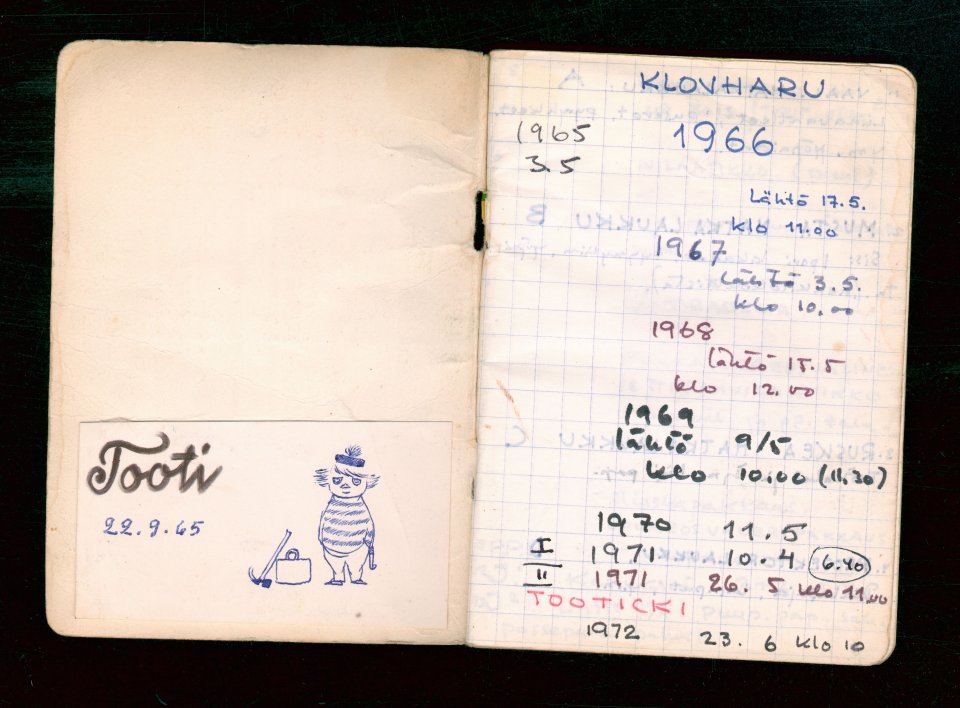
Notes from an Island
The last book written by Tove Jansson was published in 1996. It is called Notes from an Island and consists of Tove’s thoughts about living on an island in general and the time spent with Tuulikki on Klovharun in particular. The texts are accompanied by ink washes and aquatints made by Tuulikki, and the book is actually the only artistic collaboration in book form between Tove and Tuulikki. Notes from an Island has recently been published in the US by Timber Press.
Packing for the summer
As the island of Klovharun did not have any kind of modern comforts, a lot of planning was required for the long summer season. Even though the actual move to the island often did not happen until May (or at the latest June), the arrangements for the summer started much earlier. In Notes from an Island, Tove writes:
Tooti loves to pack, because she’s so good at it. In earlier years, whenever it drew on towards spring – even as early as February – she would start packing, a bit embarrassed at her own happy haste.
Both Tove and Tuulikki kept notebooks that detailed everything from what content should be packed in which bag to what was left on the island at the end of the summer. Tove and Tuulikki did not own a car, so the trip out to the island consisted of a steamboat or bus ride from Helsinki to Pellinge, followed by the shorter boat ride made with their own boat Viktoria, named after both of their fathers who happened to have the same name, Viktor.
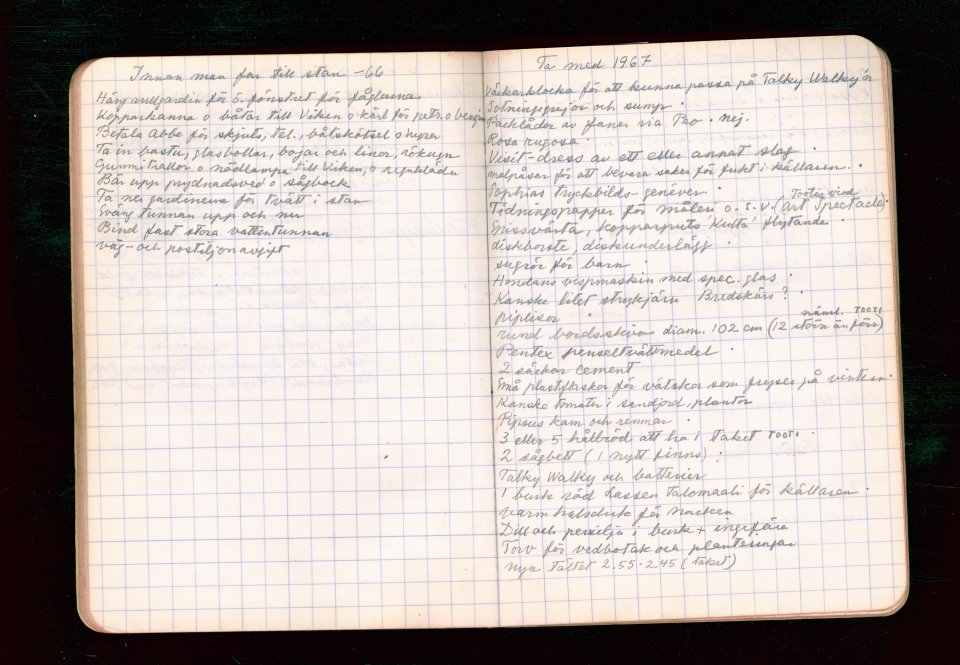
The keeper of the local shop Söderboden in Pellinge, Gerda Englund, attended to the needs of Tove and Tuulikki for more than 30 years. When the couple came by to fill up on groceries and other necessities, Gerda used to have coffee and pastries together with them. In an interview made during the research for the podcast Pennan, Penseln och hjärtat (in Swedish), Gerda says that Tove and Tuulikki used to tell her about their travels abroad when they came to the shop. Through those stories, Gerd felt like she had been there with them, whether they had been to Paris for an extended stay or a couple of weeks to Norway to cruise along the coastline on a Hurtigruten ship.
Since Tove and Tuulikki had to carry their belongings between the different vehicles and up the cliffs on the island themselves, everything was packed in smaller bags and parcels, which was easier to manage. This can also be seen on a shopping list given to Gerda Söderlund by Tove in 1981, which details that the groceries should be packed in small boxes with strings wrapped around them so that Tove and Tuulikki could carry them from the boat to the cottage. The items on that list include two small Heinz ketchup bottles, oil, sugar, coffee and 4 cans of canned chicken.
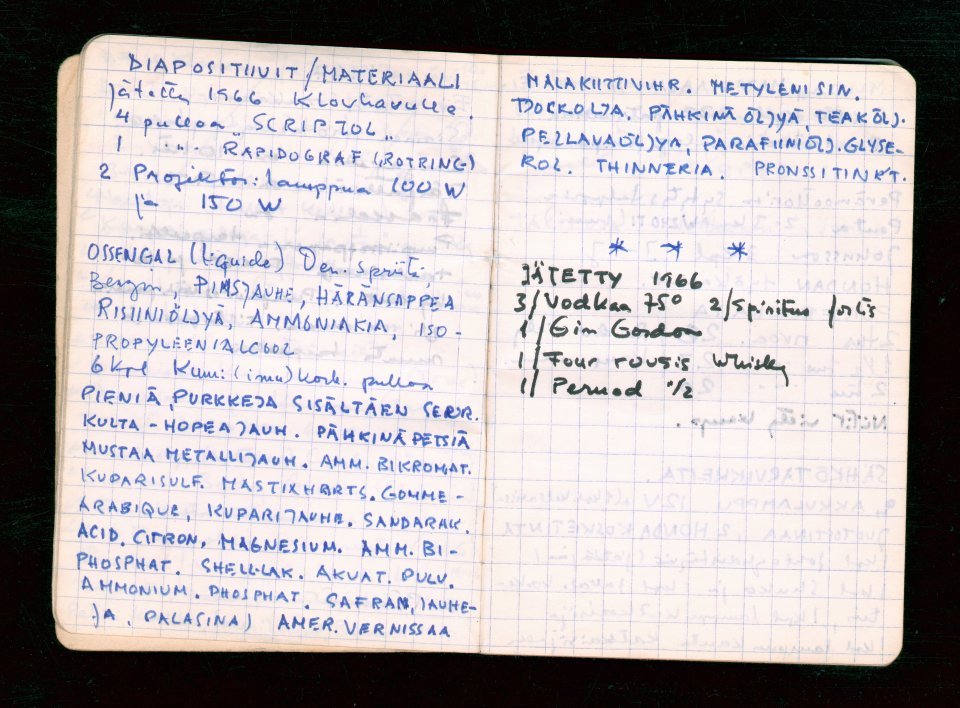
Left in 1966
3 Vodka 75 cl
2 Spiritus Fortus
1 Gin Gordon
1 Four Roses whiskey
1 Pernod 1/2
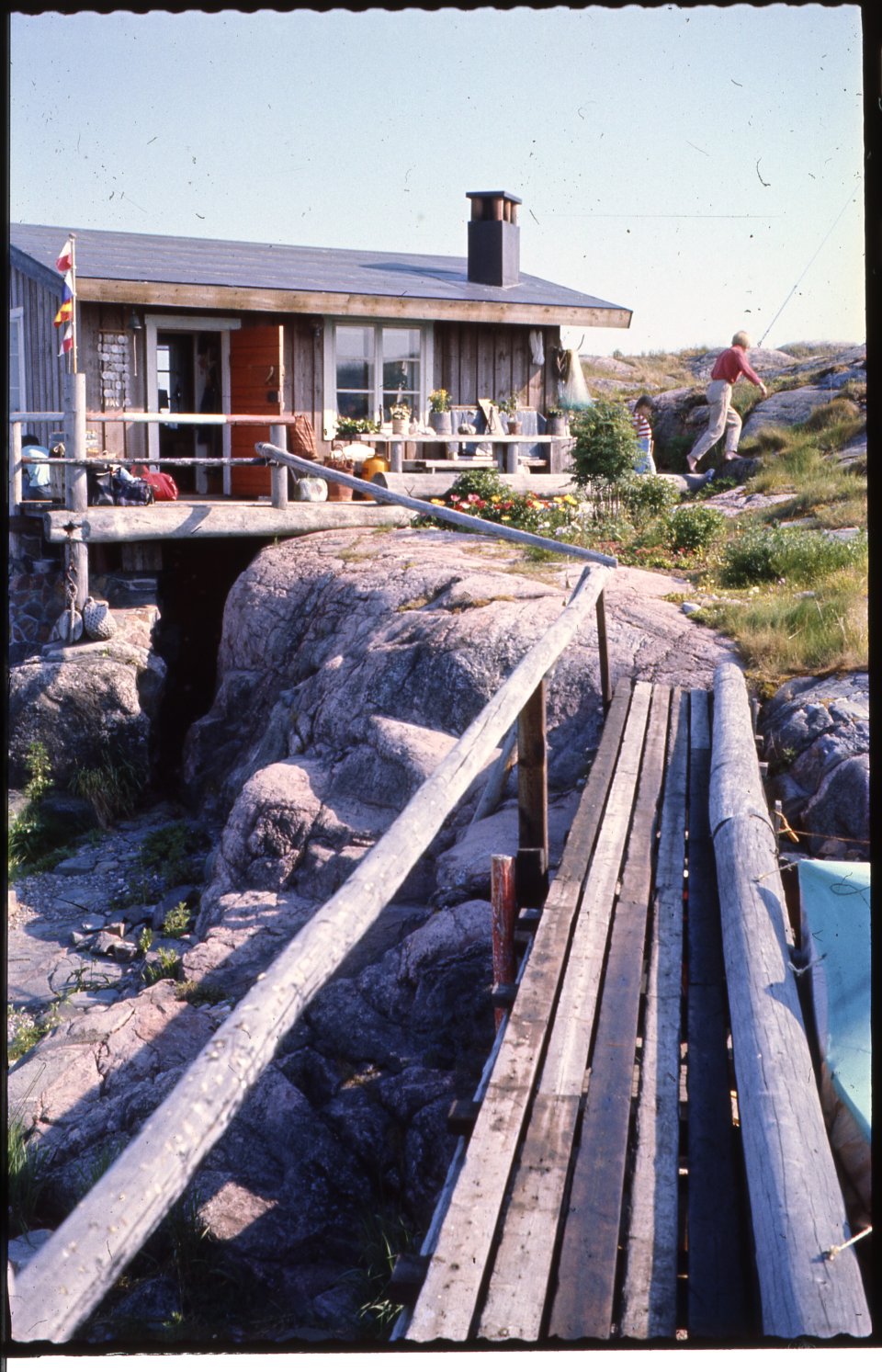
The urge to dance
They also packed cassettes with music from different categories, including Tchaikovsky’s fifth symphony, the Brandenburg Concerts, French chansons, New Orleans jazz, country music and traditional music from Hawaii that they had bought on their round-the-world trip in 1972. Music was important to both of them and Tove enjoyed dancing immensely.
In a letter to Tuulikki from one of her trips in 1968, Tove writes:
And I put in a dance record when I was packing, feeling rather sheepish. You know! I’m sure they’re no more straight-laced in Oslo than here. And my urge to dance will persist until my dying day. I often do it on my own in the studio, with or without Pipsu. And have such fun.
Leaving the island
After a long summer season, the preparations for leaving the island began. Lists of what was to be left at the island for the next season were written, the curtains were drawn down so that birds would not fly into the windows, the water barrel (where rain water was gathered) was tied down and tools, furniture and other items were brought into the cottage. The lists of chores continue for pages and pages in the note books.


An exclusive video reportage from Tove Jansson’s summer paradise
Tove Jansson’s Klovharun is an islet in the outermost archipelago of the Gulf of Finland, where Tove spent almost 30 summers.
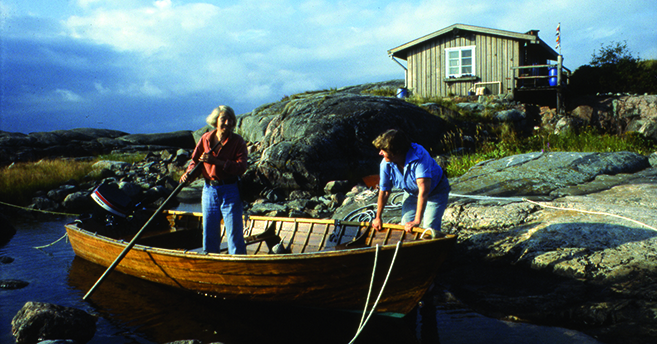
Tove Jansson and Tuulikki Pietilä: A Lifelong Companionship
Tove Jansson and Tuulikki Pietilä met during art studies and formed a bond that would last through their lifetime. Get inspired by their love!
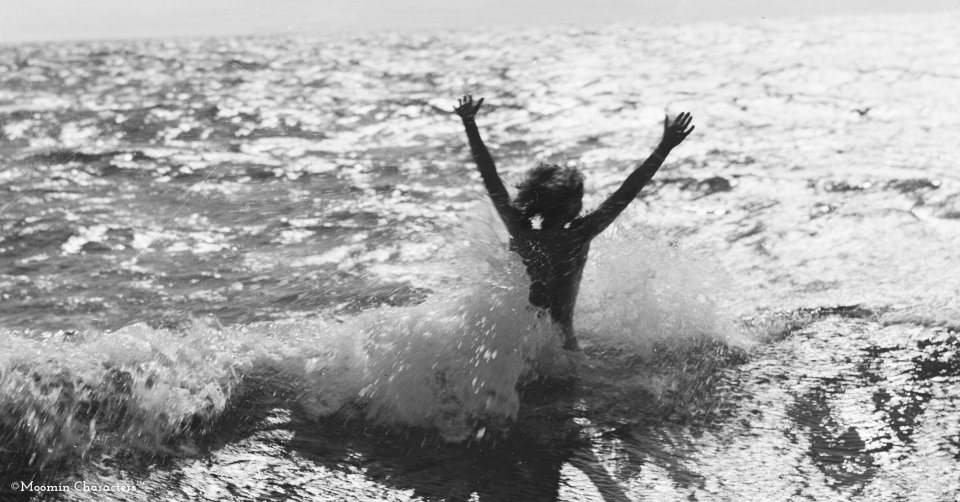
The interesting role storms played in Tove Jansson’s life and literature
Some people run out and dance when there’s a storm – Tove Jansson was one of those people. Read more about why!
